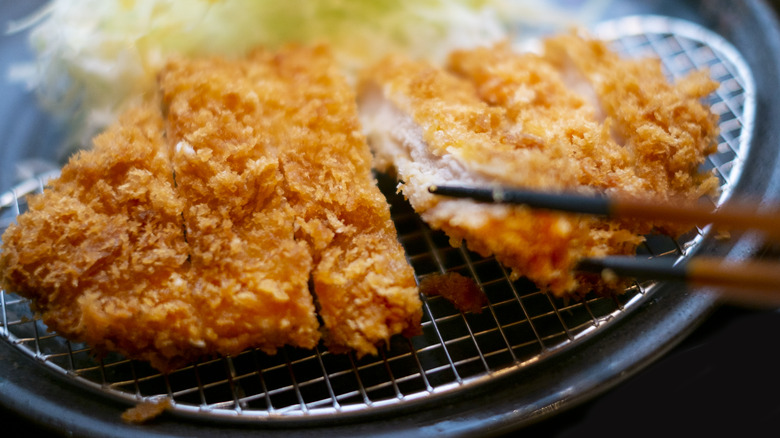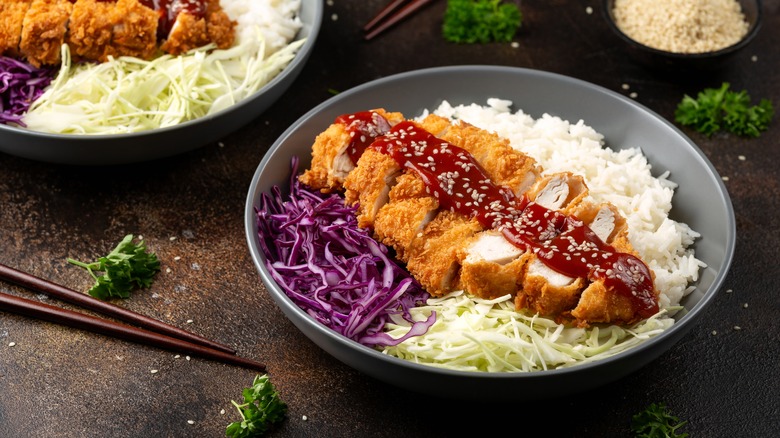How To Prep Your Katsu Meat Like A Total Expert
Do you do katsu? That is, do you enjoy eating the crunchy, savory, Japanese style of cooking meat that's dredged in panko breadcrumbs and deep fried? It's a traditional comfort food normally made with thin chicken (katsu) or pork (tonkatsu) cutlets served with steamed rice and shredded cabbage. Chicken is served with a katsu sauce (blended carrots, onion, chicken stock, and soy sauce) and pork with a tonkatsu sauce, which is a Japanese barbecue-style sauce made with soy, tomatoes, and Worcestershire sauce. While it's a very simple dish to make, there are a few important points to keep in mind, especially when you're preparing the meat.
Makoto Okuwa, the award-winning chef of Makoto Vail in Vail, Colorado, told Daily Mail that there are multiple steps to preparing the perfect katsu meat, starting with cutting and flattening. "Start by pounding the meat, which tenderizes it, and season with salt and pepper," Okuwa said. "Let the meat sit for at least 10 minutes." After you rest the meat, he says to coat it with all-purpose flour, shake off the excess, then dip it in an egg wash. "Then, bread with fresh panko made with Japanese milk bread and double fry."
How to make the crispiest katsu
Aside from the special Japanese panko breadcrumbs Makoto Okuwa uses for his katsu, his most interesting technique for making the dish is his technique of double frying the meat once it's breaded. "First, fry at 160 degrees Celsius (320 degrees Fahrenheit) for three minutes, let the meat rest for five minutes, and bring up the oil temperature to 175 degrees Celsius (347 degrees Fahrenheit) and fry for 30 seconds," he said. While you might be tempted to fry your katsu just once and save time, Okuwa says that double frying "gives the katsu an incredible crispiness and ensures it's cooked perfectly." It's a technique that's often used for making french fries, but it works much the same way for the delicate dish to keep the meat inside from drying out while getting the ideal crunch on the outside.
If you need a little inspiration for making your own katsu and you're in the Vail area, you can pop into the restaurant to try Okuwa's creations for yourself, of course. But the James Beard-recognized chef also has plenty of other places to check out his skills if you're not nearby, including Miami, Washington D.C., Panama City, Mexico City, and São Paulo. Between the six restaurants, you should have plenty of chances to taste an expert katsu beyond his Vail restaurant.

